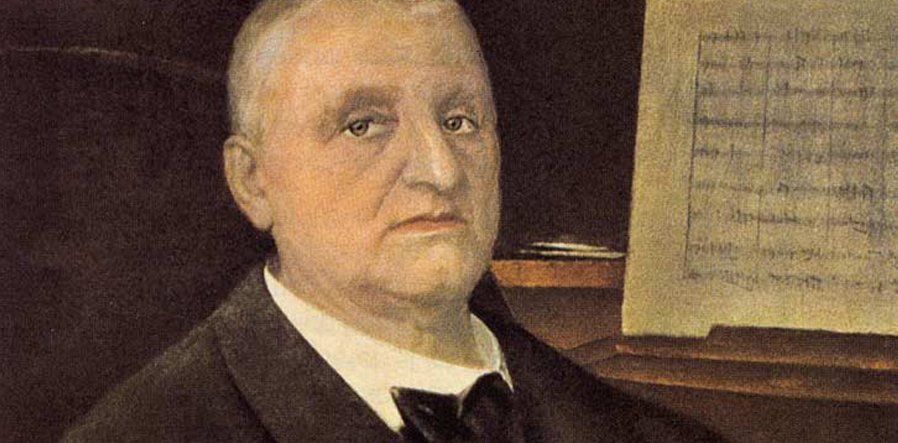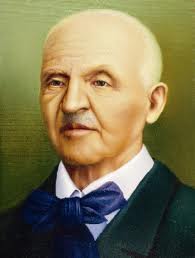Early Life and Education
Anton Bruckner was born on September 4, 1824, in Ansfelden, a small village near Linz, Austria. He was the eldest of eleven children in a devout Catholic family. His father, Anton Bruckner Sr., was a schoolteacher and organist, and his mother, Therese Helm, was a devoutly religious woman. Bruckner’s early exposure to music came through his father, who provided him with his first music lessons. His early training in playing the organ and the violin laid a solid foundation for his musical education.
In 1837, following the death of his father, Bruckner was sent to the Augustinian monastery of St. Florian, where he continued his education and received more formal musical training. The monastery’s rich musical tradition and its impressive organ left a lasting impression on Bruckner, influencing his later compositions. At St. Florian, he was exposed to a broad spectrum of sacred music, which became a central theme in his later works.
Early Career
After completing his education at St. Florian, Bruckner worked as a schoolteacher while continuing his studies in music. In 1845, he became an assistant teacher in the village of Windhaag, a position he found frustrating and uninspiring. He continued to compose during this period, but his work remained largely unnoticed.
In 1855, Bruckner secured a position as an organist at the Linz Cathedral, which provided him with a more fulfilling musical environment. During his time in Linz, he studied counterpoint and harmony under Simon Sechter, a prominent music theorist. This period was crucial for Bruckner’s development, as he immersed himself in the study of music theory and composition. He also began to gain recognition as an organist, known for his improvisational skills and command of the instrument.
Development as a Composer
Bruckner’s first major composition was the Requiem in D minor, completed in 1849. This work demonstrated his early mastery of choral and orchestral writing and marked the beginning of his journey as a serious composer. He continued to compose sacred music, including several masses and motets, which showcased his deep religious faith and his ability to blend complex counterpoint with expressive harmony.
In 1861, Bruckner moved to Vienna, where he studied under the renowned conductor and composer Otto Kitzler. Kitzler introduced Bruckner to the works of Richard Wagner, whose music had a profound influence on him. Bruckner’s symphonic style, characterized by grandiose structures and rich harmonic language, was significantly shaped by Wagner’s innovations.
The Symphonies
Bruckner’s symphonies are considered the cornerstone of his oeuvre. His first symphony, composed in 1866, established his reputation as a symphonist. However, it was his later symphonies, particularly the Fourth, Seventh, Eighth, and Ninth, that solidified his place in the pantheon of great composers.
The Fourth Symphony, known as the “Romantic,” is one of his most popular works. Its lush orchestration and expansive themes exemplify Bruckner’s mature style. The Seventh Symphony, premiered in 1884, was a significant success and brought him widespread acclaim. This symphony, dedicated to King Ludwig II of Bavaria, is notable for its elegiac Adagio, written in memory of Wagner.
Bruckner’s Eighth Symphony, completed in 1887, is often regarded as his greatest work. It is a monumental piece, both in terms of length and complexity, reflecting his deep spirituality and his struggle with personal and professional challenges. The Ninth Symphony, left unfinished at his death, is a profound testament to his faith and his artistic vision. Its three completed movements are some of the most introspective and intense music he ever wrote.
Personal Struggles and Later Life
Despite his successes, Bruckner’s life was marked by personal struggles and professional challenges. He was often criticized by the conservative musical establishment in Vienna, who viewed his music as overly ambitious and complex. He also faced financial difficulties and periods of self-doubt. However, he remained dedicated to his craft, continually revising his works and striving for perfection.
Bruckner was deeply religious, and his faith played a central role in his life and music. He never married and lived a modest life, dedicating himself to composition and teaching. In 1875, he was appointed professor of harmony and counterpoint at the Vienna Conservatory, where he influenced a generation of students.
Legacy
Anton Bruckner died on October 11, 1896, in Vienna. He was buried in the crypt of St. Florian, beneath the great organ that had inspired him as a young man. His music, once misunderstood and underappreciated, gradually gained recognition for its visionary qualities.
Today, Bruckner is celebrated as one of the greatest symphonists of the 19th century. His works are regularly performed and recorded, admired for their spiritual depth, architectural grandeur, and innovative use of harmony and orchestration. His influence can be seen in the music of later composers, including Gustav Mahler, who admired Bruckner’s symphonies and saw him as a kindred spirit.
Bruckner’s legacy is also preserved in the Bruckner Orchester Linz, named in his honor, and in the numerous Bruckner festivals and societies dedicated to promoting his music. His symphonies, masses, and motets continue to inspire musicians and listeners around the world, ensuring that his contribution to classical music will be remembered for generations to come.


Comments are closed